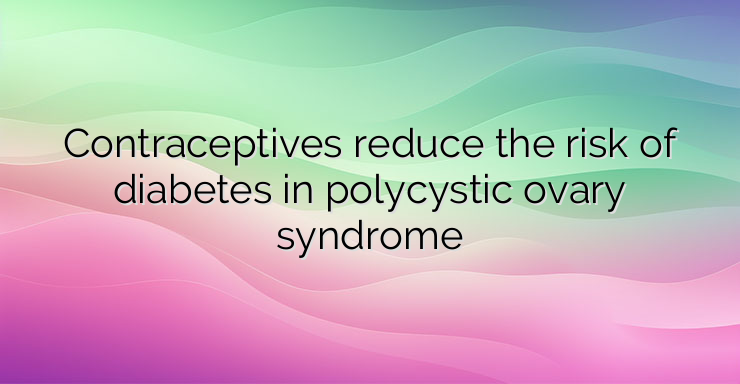Polycystic ovary syndrome affects women of reproductive age, between adolescence and menopause. It is the number one cause of infertility in women and is due to hormonal imbalance. In affected patients, testosterone is produced in high amounts and leads to the following symptoms: Irregular or absent menstrual cycle, which is associated with absent or impaired ovulation; Hair on the face, chest, back and buttocks; Acne and oily skin; Hair loss; Overweight Symptoms vary significantly from patient to patient and affect their daily life to one degree or another. Being overweight predisposes to insulin resistance, which directly links PCOS to the development of type II diabetes. There is no specific treatment for polycystic ovary syndrome, but according to a new October 2021 study published in the journal Diabetes Care, taking oral contraceptives in patients with polycystic ovaries reduces the risk of developing type II diabetes. A retrospective study conducted in Great Britain included 64,051 women affected by polycystic ovary syndrome and 123,545 women who were from the control group and had no diagnosed disease. Researchers studied the risks of developing type II diabetes in women, with polycystic ovary syndrome doubling the risk, and excessive hairiness in women with polycystic ovary syndrome further increasing the risk of developing type II diabetes. The authors of the study examined the effect of taking oral contraceptives in 4,814 patients diagnosed with polycystic ovary syndrome. Taking oral contraceptives appears to reduce the risk of developing type 2 diabetes by 25%. Very often, the diagnosis of polycystic ovary syndrome is associated with difficulties in conceiving. If this is the cause of infertility, ovulation induction is recommended. This is done by taking medication such as clomiphene citrate. Injectable gonadotropins can be used as a second choice. There are often cases of multiple pregnancies and this should be kept in mind by couples. Another method used consists of making small holes in the surface lining of the ovaries to establish a new regular ovulation and make fertilization possible. With this method, there is no increased risk of multiple pregnancy compared to normal physiological processes of fertilization. In the event that patients with polycystic ovary syndrome wish to become pregnant, the use of oral contraceptives is directly excluded as a possible therapeutic approach for the prevention of type II diabetes. Possible risks and observations for the prevention of this disease are carried out at a later stage, so as not to hinder fertilization. Sources: https://care.diabetesjournals.org/content/early/2021/10/12/dc21-0437 www.futura-sciences.com


Leave a Reply